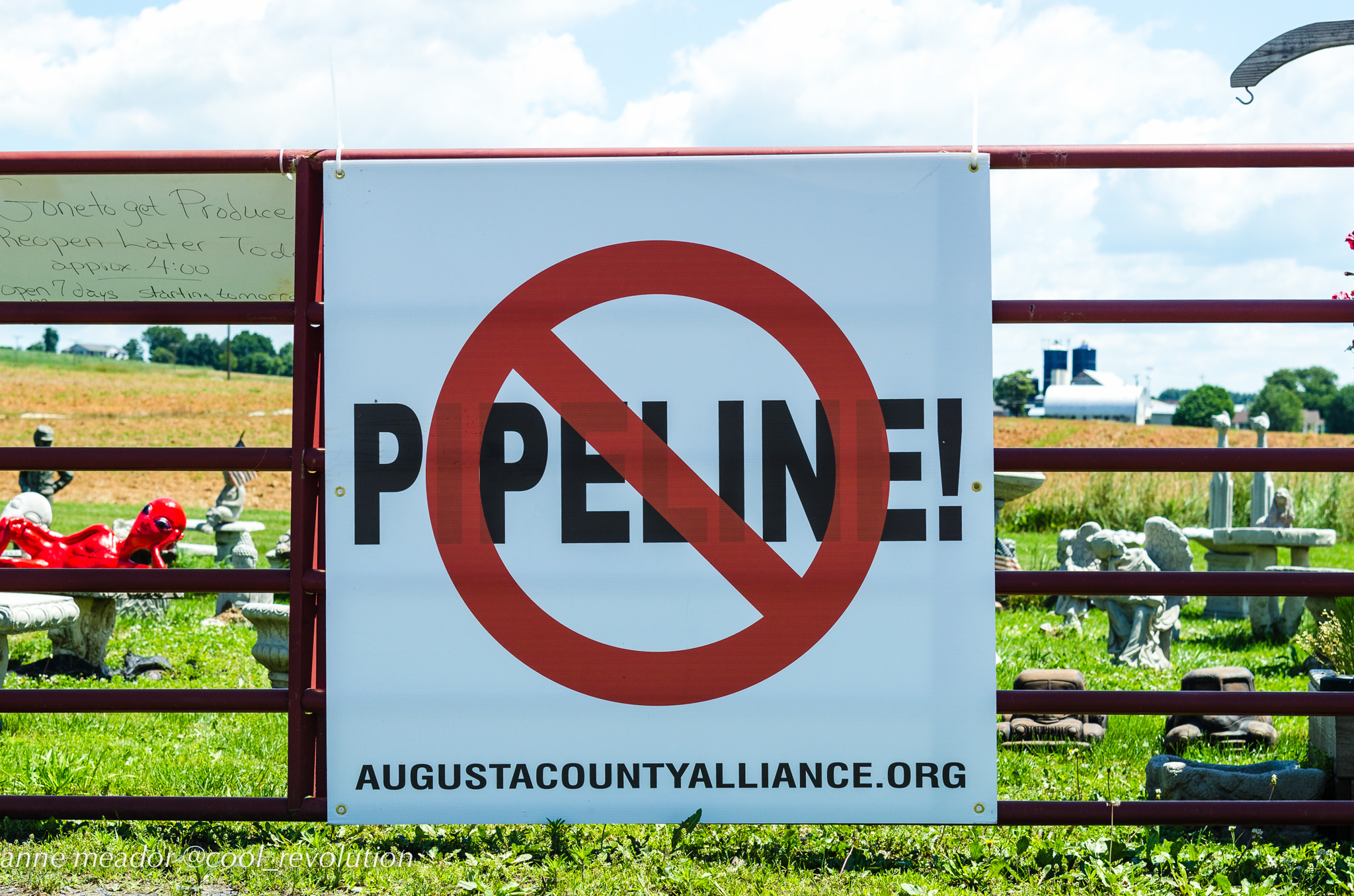On July 21, Federal regulators issued a deeply-flawed final environmental review for the Atlantic Coast Pipeline (ACP). We know that the pipeline would threaten hundreds of bodies of water, putting the drinking water for thousands of communities at risk. We also know that the Atlantic Coast Pipeline would fuel climate disaster while blocking the transition we urgently need to clean energy and efficiency solutions. It is not surprising that this review from the Federal Energy Regulatory Commission (FERC) is completely inadequate, given what we have seen in the past.
But it’s worth breaking down just how FERC gets it wrong on climate change — and what else it completely ignores.
Climate Change
The Final Environmental Impact Statement (FEIS) continues to ignore the lifecycle greenhouse gas emissions of the Atlantic Coast Pipeline. It entirely fails to consider emissions from fracking that this massive pipeline would trigger, and seriously discounts the emissions from burning the natural gas.
FERC concludes that the ACP would emit approximately 30 million tons per year of CO2 equivalent. This number is less than half of the emissions the ACP would actually trigger. A proper analysis by our friends at Oil Change International found that the ACP would cause 68 million metric tons of greenhouse gas pollution per year, which is the equivalent of 20 U.S. coal plants or over 14 million vehicles on the road.
FERC insists, as it has in past analyses, that “the upstream production and downstream combustion of gas is not causally connected [to the ACP] because the production and end-use would occur with or without the projects.”
This claim would be laughable if the consequences of climate change weren’t so severe.
FERC is ignoring its own role in approving all interstate gas pipelines, which are essential for the expanding gas production in the Appalachian basin. Even if you accept FERC’s premise that fracking for gas would occur without the ACP, which we don’t, you can’t ignore the fact that new pipelines generally trigger new fracking. And it’s FERC that approves all new interstate pipelines. A study by Oil Change International found that the Appalachian basin is the region with the greatest potential for growth in dangerous fracking, and developers are eager for pipelines to make high levels of fracking economical. There are currently 19 pipelines proposed in this region being considered by FERC. These pipelines would be a global warming bomb.
For the first time, FERC included a discussion of the Clean Power Plan in its review — but it provided no context or analysis for how the pipeline would impact a state’s goal under the plan. The purpose of the National Environmental Policy Act is to meaningfully inform the public about the consequences of a major federal action before it takes places. Referencing the Clean Power Plan for the first time with no context does not provide meaningful information the public needs to evaluate the ACP and falls short of NEPA.
The draft analysis included a discussion of why the Council on Environmental Quality’s climate guidance, issued under the Obama Administration, didn’t apply to the ACP. FERC removed that discussion in this final draft. Instead it inserted a footnote discussing Trump’s executive order directing federal agencies to not consider indirect climate impacts in their environmental reviews, such as the increased fracking that would come with the ACP.
These pipelines are meant to last 50 years or more, according to NPR. They are presented as climate-friendly alternatives to coal, but they serve only to lock us into a new form of dangerous fossil fuel instead. Methane, the primary component of natural gas, is 86 times more potent than carbon dioxide over a 20-year period. The ACP would lock us into decades of reliance on fossil fuels when we know we need to move to clean sources of energy, like wind and solar.
Ridgetop Removal
The FEIS does not require Dominion to make any changes to minimize ridgetop removal, period.
Experts studied the draft EIS to find that the construction of this pipeline would result in 38 miles of mountain ridgetop removal. For perspective, the height equivalent of a five-story building would be erased in places from fully forested and ancient mountains, much of it near the treasured Appalachian Trail.
Despite the outcry and unimaginable impacts from removing miles of ridgetops, not much changed in FERC’s final review. FERC still expects construction of the pipeline to require 125 feet of clearing width in mountainous regions. The agency directly states that “clearing and grading . . . would level the right-of-way surface.”
Furthermore, Dominion has yet to reveal how it intends to dispose of at least 247,000 dump-truck-loads of excess rock and soil—known as “overburden”—that would accumulate from the construction along just these 38 miles of ridgetops. The FEIS, for the first time, tells us definitively that “excess rock and spoil would be hauled off to an approved disposal location or used a beneficial reuse.” Yet Dominion and FERC still have provided no plan for dealing with this overburden and ensuring that it doesn’t poison our waterways.
Renewable Energy
The bottom-line is this: In its determination of “need,” FERC fully fails to even consider renewable energy as an alternative to this project.
If Dominion wants to bring more energy to Virginians, it should be focusing on clean energy, like expanding its pilot offshore wind program and opening the door to widespread community solar. The last thing Virginia needs is more natural gas infrastructure.
As Southern Environmental Law Center Senior Attorney Greg Buppert stated, “It’s FERC’s responsibility to determine if this pipeline is a public necessity before it allows developers to take private property, clear forests, and carve up mountainsides. Mounting evidence shows that it is not.”
For our climate and our future, we must stop this pipeline.
Click HERE to see actions you can take right now.
Photo at the top from Flickr user cool revolution with a Creative Commons license.





